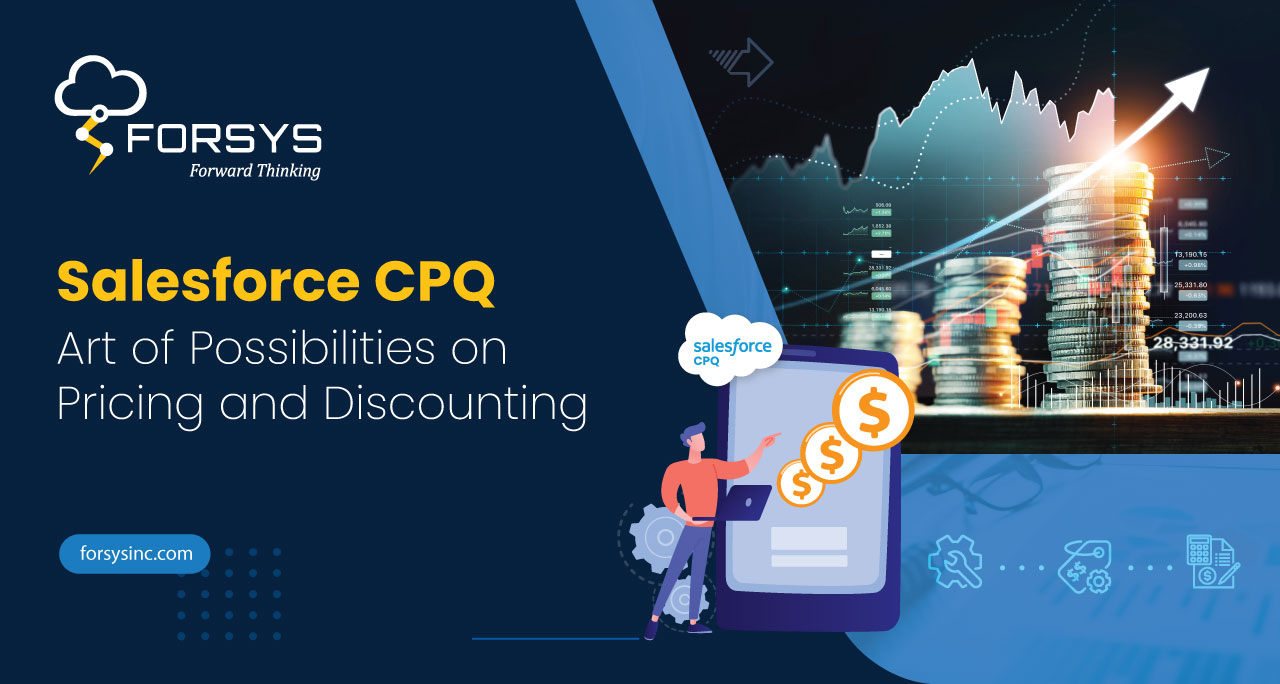Introduction
Pricing proposition is an integral element of any business strategy because it directly impacts the profit and loss statement of an organization.
Having said that, many times businesses end up using incorrect or poor pricing structures, resulting in poor revenue, market position and brand loyalty. It means that creating awesome quotes for your clients isn’t just about selecting the right products, it is also about ensuring that the right prices are quoted for these products.
Let’s comprehend this with an example. Suppose an organization negotiated a price with the customer which the sales team remembered to take into consideration for similar exceptions – but what if the business doesn’t have the bandwidth to make the same pricing revisions on every single quote?

Harness the Power of Salesforce CPQ
Salesforce CPQ offers several tools to the administrators that ensure that products/services are appropriately priced when added to a quote. Most often, businesses live by “if it isn’t broken, don’t fix it” and are not open to changes. Also, using binders full of pricing tables or spreadsheets is a thing of the past now.
Hence, using Salesforce CPQ is a complete win-win situation for businesses as it can accommodate a variety of pricing use cases (i.e., adjust and replace the prices it gets from price books) and allows pricing customization by applying different discounts or markups so that the sales rep can spend more time closing deals.
The native pricing methods that Salesforce CPQ supports for the SKUs include:
- List price
It is suitable for products that have static, fixed prices that need to be retrieved from the price book entry. To make the list price editable by the sales rep, check the field present on the product price “Is editable”.
Additionally, it permits discount addition and overrides the list price on the product option level under a bundle so that a bundled product can be sold at a customized price.
- Cost price
This enables setting a price based on the product cost and adding a markup. For example, a car sales rep sets up a price of $10k to bag a commission while it costs the dealer a mere $8k. This is best used when the business wants to bag a profitable markup on the manufacturing price.
Here, discounts can’t be applied and a cost price can be created from the Costs Related List on the product record where the users apply the markup on the quote line editor either in amount or % format.
- Block price
In this pricing variant, a product can be priced based on the blocks or ranges of quantities. When the block-priced product is selected, and quantity is defined, Salesforce CPQ assesses where it is best fit in the quantity range and then sets the price accordingly. Despite selecting the price editable field, users can manually override block prices.
- Percent of Total (PoT)
Also known as dynamic pricing, the product price is calculated based on a percent of the sum of other product prices. For instance, 10-20% is paid as a tip on a food bill when we eat at a restaurant.
To set a product as PoT, it is important to populate the fields – Subscription Pricing, Pricing Method, Percent Of Total, Percent Of Total Base, Percent Of Total Category, Percent Of Total Constraint, Include/Exclude From Percent Of Total.
- Batch Price
This pricing variant is only applicable to the bundled product options and not to standalone products. Also, it is leveraged to price component and accessory product options based on quantity ranges.
- Contracted Pricing
Using product look-up fields (or for categories of products, using filter fields), account-specific pricing for a few products is allowed here. As the name suggests, this is beneficial and comes in handy when the negotiated price is implemented on the first signed contract and the customer is in favor of using the same price for future quotes. In Salesforce CPQ, the negotiated price can be used everywhere – new quotes, renewal quotes, and amendment quotes.
- Multidimensional term pricing
In this pricing type, different discounts for different terms on a quote can be applied. For instance, a three-year subscription will apply a 10% discount in the first year, a 20% discount in the second year, and a 40% discount during the third year.
Closing Remarks
Salesforce CPQ allows automatic pricing of products accurately when added to a quote and the creation of discount schedules for volume-based (i.e. quantity-based discounts) and term-based discounts (i.e. discounts based on a number of months) apart from applying discounts directly on the product’s cost.
All in all, Salesforce CPQ collates pricing models with Product and Price Rules for different unlimited pricing scenarios and functionality.
Contact us today to find out how Forsys, a full-solution Systems Integration Partner for Salesforce, can help businesses like yours leverage several ways to price and discount their customers successfully.

